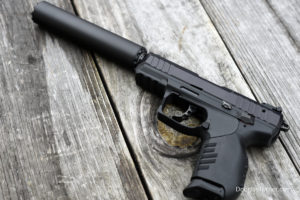 It all started in the 1930s. After the repeal of prohibition, the National Firearms Act (the “NFA”) became law. Congress imposed restrictive regulations on certain firearms by way of the power to tax. Initially, machine guns, short barreled shotguns and rifles (SBS’s & SBR’s), any other concealable firearm other than a revolver or pistol (AOW’s), and silencers were regulated. Registration was mandatory as was the payment of a $200.00 tax. $200.00 was a lot of money in the 1930s. That is about $3,000.00, adjusted for today’s dollars.
It all started in the 1930s. After the repeal of prohibition, the National Firearms Act (the “NFA”) became law. Congress imposed restrictive regulations on certain firearms by way of the power to tax. Initially, machine guns, short barreled shotguns and rifles (SBS’s & SBR’s), any other concealable firearm other than a revolver or pistol (AOW’s), and silencers were regulated. Registration was mandatory as was the payment of a $200.00 tax. $200.00 was a lot of money in the 1930s. That is about $3,000.00, adjusted for today’s dollars.
The $200.00 tax has remained constant for machine guns, SBSs, SBR’s, suppressors, and destructive devices (DD’s). The tax on AOW’s was eventually reduced to $5.00. Consequences for illegally possessing an NFA item are significant. A violation could mean a 10 year prison sentence and a $250,000.00 fine. Next time you want to try out your friend’s short barreled shotgun, keep that in mind. Only the person who registered the NFA firearm with the BATF and acquired the tax stamp may legally be in actual or constructive possession of the NFA firearm. Some may argue otherwise. However, to date nobody has shown us the written ATF document that says otherwise.
The important word is “person”. The term person includes individuals and other entities like LLC’s, corporations, and trusts. To allow friends and family to legally possess NFA firearms and avoid constructive possession issues, individuals have turned to trusts with multiple trustees to comply with the law. At first the trend was slow. Over time, the trust became the preferred way to hold NFA firearms and Title I firearms as state laws became more restrictive.
Properly drafted, an NFA/firearms trust allows for multiple individuals to possess the NFA item/firearm thereby letting several individuals be in legal possession of the NFA item/firearm. Accessories may also be transferred to the trust depending on local law. All allowing for continuity of ownership and continued possession by multiple individuals.

